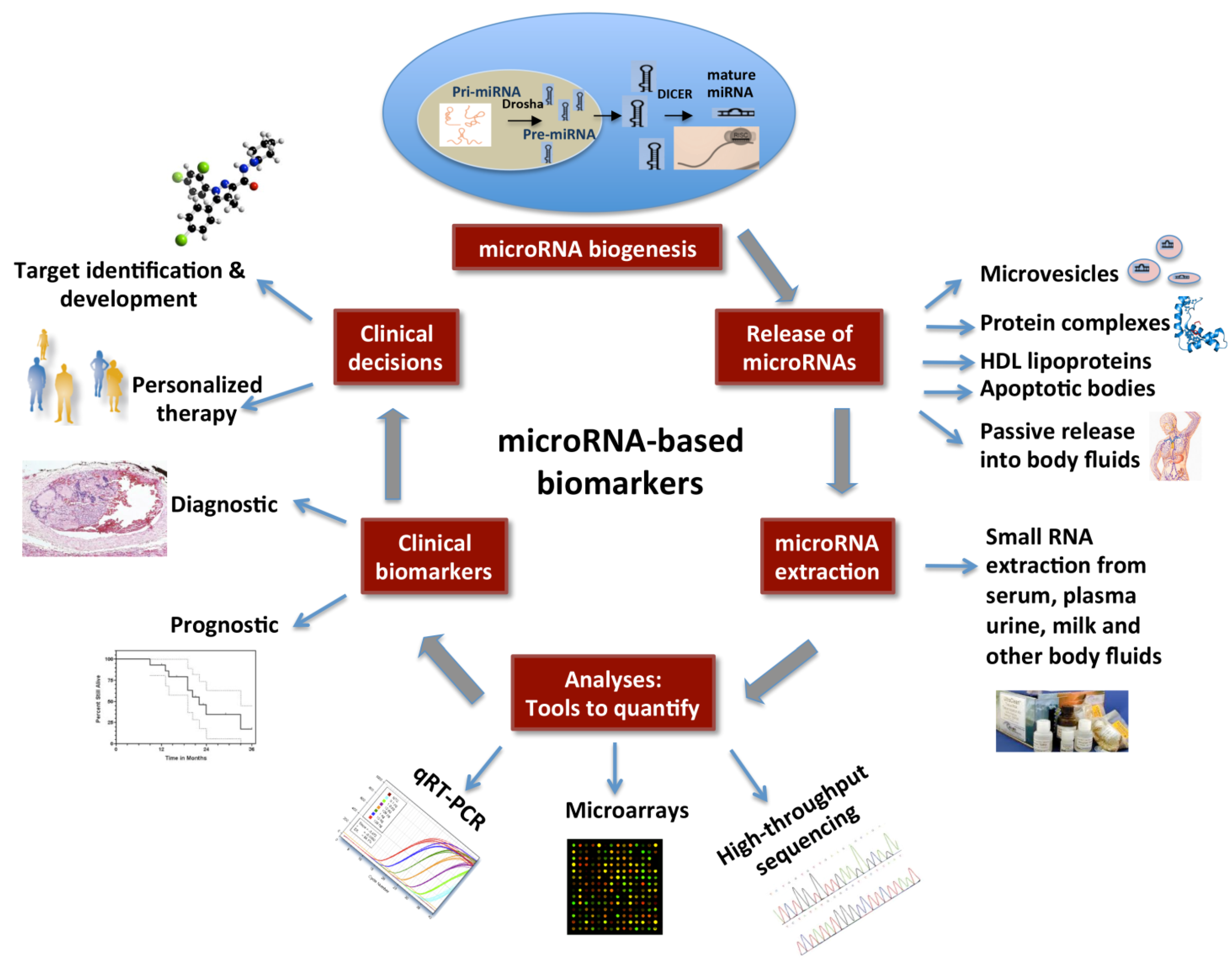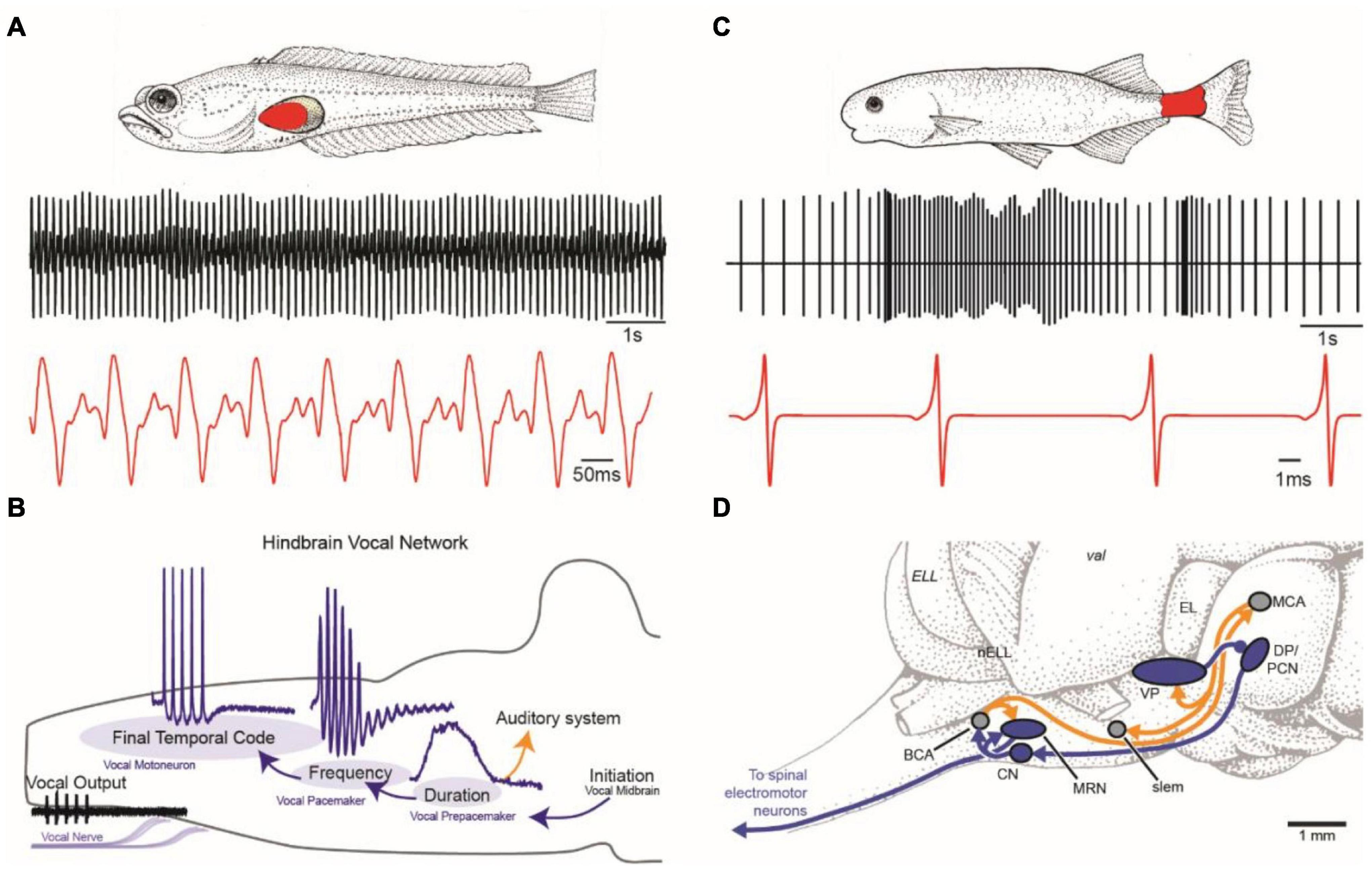MicroRNA research has emerged as a groundbreaking area in the field of genetics, fundamentally changing our understanding of gene regulation. First discovered by Gary Ruvkun and Victor Ambros in the early 1990s, these small RNA molecules play a crucial role in controlling protein synthesis within cells, and their significance extends far beyond the roundworm C. elegans. The potential for RNA therapeutics inspired by this research opens innovative treatment avenues for diseases like cancer, heart disease, and neurodegenerative disorders, paving the way for significant advancements in medical science. With increasing federal funding fueling continued exploration, microRNA is becoming a focal point for researchers aiming to unlock further mysteries of the human genome. The recognition of Ruvkun’s work, culminating in the 2024 Nobel Prize, highlights how far this field has come and its importance in shaping the future of medicine.
The exploration of tiny RNA molecules known as microRNAs is revolutionizing our comprehension of genetic dynamics and cellular functions. Initially overlooked in the 1990s, this area of study has garnered remarkable attention due to its implications for gene expression regulation and therapeutic innovations. Advocates like Gary Ruvkun have spotlighted the importance of microRNA in various biological processes, from development to disease management. As researchers delve deeper into this molecular landscape, emerging discoveries could transform our approach to treating complex conditions such as Alzheimer’s disease and cancer. With sustained federal investment, this burgeoning field promises to continue its upward trajectory, reshaping both science and medicine.
The Journey of MicroRNA Research
MicroRNA research has undergone a remarkable evolution since its initial discovery in the 1990s by Gary Ruvkun and Victor Ambros. These scientists, initially regarded as niche researchers within the evolutionary biology community, unveiled the intricate roles that microRNAs play in gene regulation. Their findings, published in the prestigious journal Cell, initially drew limited attention; however, the significance of their work became increasingly apparent over the years. It demonstrated a crucial link in the understanding of how genes control biological processes, laying the groundwork for subsequent breakthroughs in molecular biology.
As interest in microRNA research expanded, the once small and unassuming community of RNA researchers began to grow. The doubling of attendance at relevant scientific meetings signifies a burgeoning recognition of microRNAs’ roles beyond their original model organism, the C. elegans roundworm. This increase in engagement highlighted a vital shift in biological research, indicating that what started as basic science was evolving into something with widespread implications across multiple disciplines, including plant biology and human health.
The pivotal work of Gary Ruvkun and Victor Ambros ultimately shaped the future of gene regulation research, culminating in their recognition with the 2024 Nobel Prize in physiology or medicine. Their discovery of microRNA serves as a fundamental building block for understanding genetic mechanisms, fostering innovative research across various fields, and inspiring countless researchers to explore the vast potential of RNA therapeutics in treating complex diseases.
Today, microRNAs are recognized as a critical component of gene regulation, influencing the development, maturation, and function of organisms. Ruvkun’s insights into microRNA functionality illuminated the intricate web of gene interactions vital for maintaining health and regulating disease states. The increasing evidence that microRNAs can control most human protein-producing genes underscores their significance in advancing molecular biology and human medicine.
The Impact of Federal Funding on MicroRNA Research
An essential aspect of Gary Ruvkun’s success in the field of microRNA research is the steadfast support of federal funding, primarily provided by the National Institutes of Health (NIH). For over four decades, Ruvkun’s lab has relied heavily on these federal grants, which have allowed him to explore groundbreaking ideas and contribute significantly to the scientific community. The average annual funding of approximately $150,000 has supported a small team of dedicated researchers who have driven innovations in RNA therapeutics and their applications.
The relationship between federal funding and scientific advancement is pivotal, as emphasized by Ruvkun’s experience. He notes the importance of stable financial support for fostering a vibrant research environment where new scientific ideas can flourish. Cutting this funding could jeopardize the progress made in RNA research and potentially drive emerging scientists away from careers in academia. The implications of diminishing support for vital research are profound, as they not only threaten scientific discovery but also the U.S.’s position as a global leader in innovation.
Ruvkun’s lab, though modest in size, boasts an impressive track record of achievements that demonstrate the efficacy of targeted federal investment in science. The advances resulting from this investment highlight the importance of continued support for basic research and its transformative impact on public health and technological development. With major pharmaceutical companies like Alnylam emerging from research environments fueled by federal grants, the trajectory of gene regulation studies suggests a future ripe with potential for medical breakthroughs and innovative therapies.
Navigating the unpredictable landscape of research funding is a challenge many scientists face, and Ruvkun’s concerns reflect a broader trend impacting young researchers in today’s academic setting. As they contemplate their futures in an environment marked by uncertainties, the necessity for sustained federal investment in science remains critical. By nurturing the next generation of scientists through stable funding, the potential for groundbreaking discoveries, particularly in the realm of microRNA and its therapeutic applications, can continue to thrive, reshaping outcomes for various diseases.
MicroRNA Therapeutics: Revolutionizing Medicine
The discovery of microRNAs has opened up exciting avenues for the development of RNA therapeutics aimed at treating a variety of diseases. Researchers have found that these small RNA molecules play critical roles in gene expression regulation, which has profound implications for understanding various conditions, including cancer, heart disease, Crohn’s disease, and neurodegenerative disorders. By targeting specific microRNAs involved in disease pathways, innovative therapies are now in clinical trials, paving the way for personalized medicine approaches that offer hope for effective treatments.
The potential of microRNA-based therapies is vast, as their ability to modulate gene expression can lead to novel intervention strategies that go beyond traditional treatments. For instance, in the context of cancer management, manipulating the levels of specific microRNAs can facilitate tumor suppression or promote the apoptosis of cancer cells. Translating these basic research findings into clinical applications signifies an important progression from laboratory bench to bedside, highlighting the importance of continued investment in microRNA studies.
Additionally, the connection between microRNA research and the burgeoning field of RNA therapeutics has captured the attention of major pharmaceutical companies. Alnylam Pharmaceuticals, born from the groundbreaking insights gained from early microRNA research, is at the forefront of developing RNA interference therapies that target genetic diseases. This emergence reflects a vital trend where fundamental discoveries lead to transformative health solutions, emphasizing the ongoing relevance of Ruvkun’s work in shaping the next generation of medical innovations.
The future of medicine largely hinges on advancing our understanding of microRNA mechanisms and their therapeutic applications. With ongoing clinical trials revealing the efficacy of microRNA therapeutics, there is growing optimism that these approaches could revolutionize treatment protocols within various medical fields. As research further elucidates the intricate roles of microRNAs, the potential for developing safe and effective therapies continues to expand, ultimately transforming how we view and treat diseases.
The Role of MicroRNAs in Gene Regulation
The discovery of microRNAs highlighted a previously underappreciated layer of gene regulation, adding complexity to the understanding of genetic expression in organisms. MicroRNAs are involved in the post-transcriptional regulation of genes, functioning as crucial players in controlling how much protein is produced from various genes. This regulation is vital for maintaining cellular homeostasis and responding to developmental signals, making microRNAs indispensable in genetics and molecular biology.
Through their ability to bind to messenger RNA (mRNA) molecules, microRNAs can inhibit translation or trigger mRNA degradation, thereby fine-tuning gene expression levels. This functionality suggests that microRNAs are fundamental regulators of gene networks, influencing key biological processes from embryonic development to the immune response. Their widespread presence across diverse species further underscores their evolutionary importance and their role as potential targets for advanced therapeutic strategies.
Understanding how microRNA molecules interact within the complex ecosystem of gene regulation has opened avenues for research focused on genetic disorders and diseases. Given that fluctuations in microRNA levels can be linked to health conditions, deciphering these molecular interactions could lead to early diagnostic tools and innovative treatment protocols. The ongoing exploration of microRNA function will undoubtedly enrich the field of gene regulation and enhance methodologies in RNA therapeutics, reflecting the profound impact of Ruvkun’s initial discovery.
Consequently, the study of microRNAs continues to be a fertile ground for developing new insights into various biological phenomena and disease mechanisms. Continued investments in this area, supported by federal funding, are crucial for ensuring that research remains robust and comprehensive. As we deepen our understanding of microRNA’s roles in gene regulation, the implications for medical research are poised to be significant, potentially leading to breakthroughs in personalized medicine and targeted therapies.
Challenges Faced in MicroRNA Research
Despite the promising developments surrounding microRNA research, scientists like Gary Ruvkun face several hurdles that threaten the continuity and progress of their work. One of the primary challenges is securing consistent funding amidst changing political landscapes and fluctuating national priorities. The threat of budget cuts to federal funding, which has supported critical research infrastructure, raises questions about the future of scientific inquiry, especially in fields deemed non-immediate or non-political.
Moreover, the landscape of research is highly competitive, and as interest in microRNA and gene regulation grows, so does the need for innovation and adaptability within research strategies. Scientists must continually navigate complex regulatory pathways, ethical considerations, and the translation of basic science findings into applicable therapeutic options. The pursuit of knowledge in this rapidly evolving field relies not only on scientific rigor but also on the ability to garner public and institutional support for ongoing research initiatives.
Another pressing challenge is the need for interdisciplinary collaboration as microRNA research transcends traditional biological boundaries. Integrating insights from bioinformatics, molecular biology, and clinical applications is essential for maximizing the impact of microRNA discoveries. Fostering collaboration across diverse scientific domains will facilitate innovative solutions and further advance the understanding and application of microRNAs in medicine.
In light of these challenges, it is crucial for the scientific community to advocate for sustained investment in microRNA research. Engaging policymakers and the public in discussions about the importance of basic research funding can help to solidify support for ongoing initiatives. Furthermore, training and mentoring young scientists are vital for cultivating the next wave of researchers who will carry the torch in advancing our understanding of microRNAs and their therapeutic potential.
Future Prospects of MicroRNA Studies
The future prospects for microRNA studies are exceptionally bright, with the potential to radically transform our approach to understanding gene expression and developing targeted therapies. As ongoing research continues to unveil the nuances of microRNA functionality and their implications in various biological processes, it becomes increasingly clear that these small RNA molecules hold the key to unlocking new treatments for countless diseases. The insights gained from microRNA studies may lead to advanced therapeutic strategies that offer a personalized approach to medicine.
Moreover, as researchers deepen their knowledge of the interactions between microRNAs and their target genes, the potential for discovering novel therapeutic targets expands significantly. The shift toward precision medicine—where treatments are tailored to individual genetic profiles—could become a reality through the application of microRNA-based therapies. These innovations have the potential to change how clinicians approach disease management, ultimately leading to improved patient outcomes and quality of life.
With the momentum gathering in the field, interdisciplinary collaborations will play a pivotal role in the evolution of microRNA research. By pooling expertise from genetics, biochemistry, and clinical specialties, researchers can forge new paths to understanding how microRNAs function in health and disease. This collaborative approach may accelerate the translation of research findings into clinical applications, fostering a new wave of antibiotic, antiviral, and anticancer therapies primarily based on microRNA biology.
As we stand at the intersection of discovery and application, the future of microRNA studies promises to be dynamic and impactful. Continued support for research funding, particularly from federal sources, is vital to ensure that the potential of microRNAs is fully realized. By cultivating an environment conducive to scientific exploration, we pave the way for groundbreaking discoveries that have the potential to redefine how we understand and treat diseases across the globe.
Frequently Asked Questions
What is the significance of Gary Ruvkun’s discovery of microRNA in gene regulation?
Gary Ruvkun’s discovery of microRNA in the 1990s revealed a groundbreaking mechanism of gene regulation that influences how genes are expressed into proteins. This discovery highlighted the role of microRNAs in various biological processes and earned Ruvkun a Nobel Prize in 2024, marking a pivotal moment in molecular biology.
How has federal funding impacted microRNA research in the United States?
Federal funding has played a crucial role in advancing microRNA research. Over the years, Gary Ruvkun’s lab has received substantial NIH grants that have supported foundational studies in RNA biology. This support has led to significant breakthroughs in understanding gene regulation and the development of RNA therapeutics.
What potential do microRNAs hold in RNA therapeutics?
MicroRNAs have immense potential in RNA therapeutics, with ongoing clinical trials for treating diseases like cancer, heart disease, and Alzheimer’s. Their ability to regulate gene expression offers a novel approach to tackle complex diseases at the genetic level.
Why did it take time for the scientific community to appreciate the importance of microRNA research?
Initially, the significance of microRNAs was not clear, as research focused on C. elegans seemed limited to this organism. However, as the broader implications for gene regulation across various species became evident, interest in microRNA research surged, leading to recognition of its importance.
In what ways have microRNAs influenced our understanding of human health?
Research on microRNAs has dramatically enhanced our understanding of human health, uncovering their role in regulating protein-coding genes. This knowledge is crucial for developing therapies for numerous conditions, demonstrating the essential nature of microRNA research in modern medicine.
What are the current applications of microRNA research in clinical settings?
Current applications of microRNA research in clinical settings include developing targeted therapies for a range of diseases, including cancer and neurodegenerative disorders. The ongoing clinical trials emphasize the transition from basic microRNA research to impactful RNA therapeutics.
What challenges does the microRNA research field face regarding funding and resources?
Despite its promise, microRNA research faces challenges related to funding, especially with calls to decrease federal support. This uncertainty could deter emerging researchers from pursuing careers in this essential field, risking a slowdown in innovative scientific advancements.
How does Gary Ruvkun view the future of microRNA research and its societal impact?
Gary Ruvkun is optimistic about the future of microRNA research, believing it will continue to yield essential insights into gene regulation. He emphasizes that ongoing federal support is vital for maintaining the United States’ leadership in this transformative area of science.
| Key Points |
|---|
| Gary Ruvkun and Victor Ambros discovered microRNA in 1992, initially not recognized as significant. |
| Their research was published in 1993 but did not receive widespread attention initially. |
| Over time, interest grew in the role of microRNAs across various fields. |
| MicroRNAs are vital in gene regulation and have about 1,000 types in the human genome. |
| Current therapies targeting microRNAs are being explored for diseases like cancer and Alzheimer’s. |
| Ruvkun’s research has been largely federally funded, emphasizing the importance of such support. |
| The benefits of microRNA research extend to the pharmaceutical industry, driving innovations. |
| Concerns exist about the future of funding for scientific research and its impact on young researchers. |
Summary
MicroRNA research has significantly advanced since its discovery in the early 1990s, leading to a greater understanding of genetic regulation and potential therapeutic applications. The journey of Gary Ruvkun and Victor Ambros illustrates how foundational research can lead to groundbreaking innovations and eventually to prestigious awards like the Nobel Prize. Continued investment in microRNA research is critical to sustaining advancements that result in impactful treatments for various diseases.



